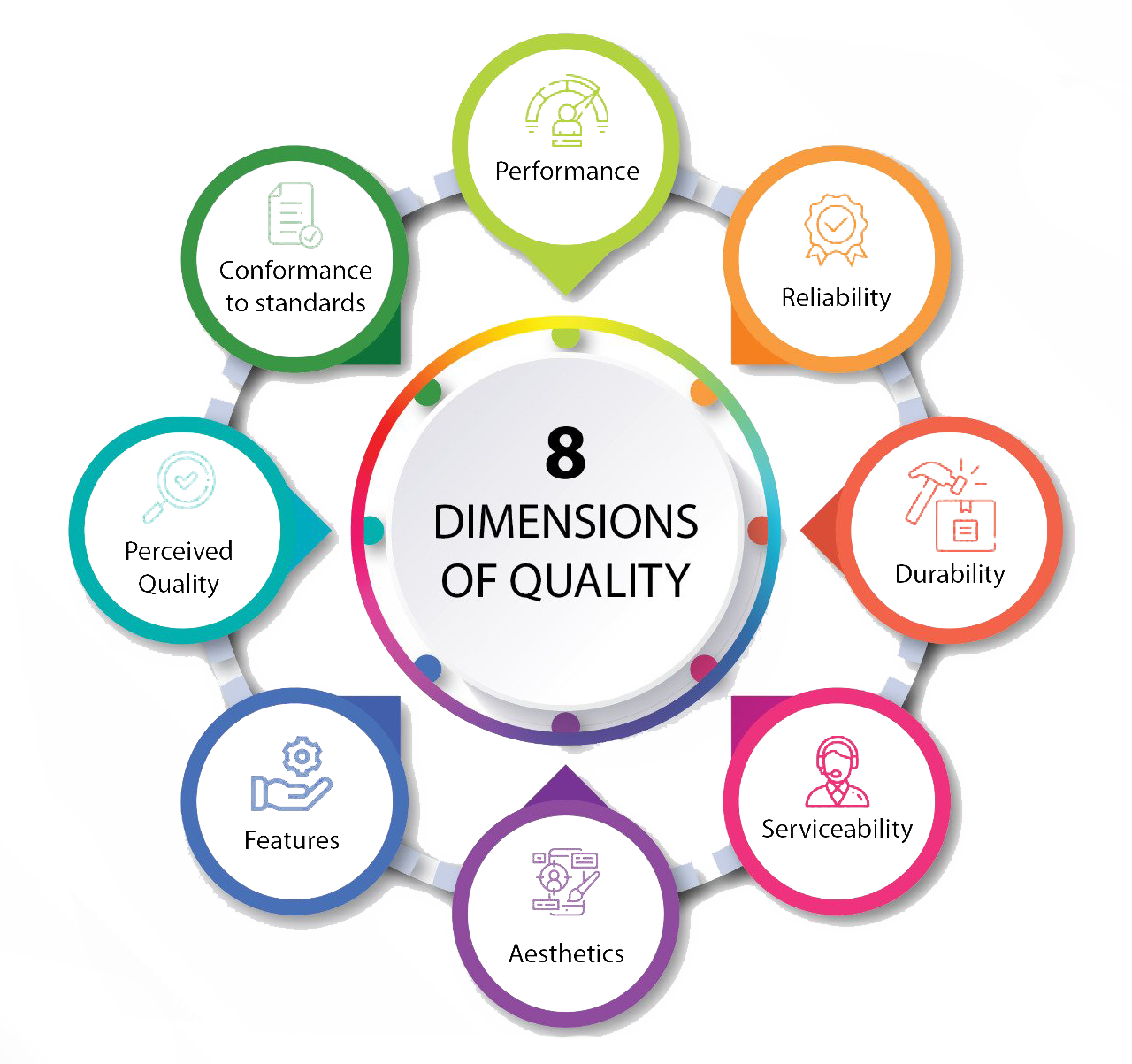Quality Assurance (QA) is a way of preventing mistakes and defects in manufactured products and avoiding problems when delivering products or services to customers; which ISO 9000 defines as “part of quality management focused on providing confidence that quality requirements will be fulfilled”.
QA comprises administrative and procedural activities implemented in a quality system so that requirements and goals for a product, service or activity will be fulfilled. It is the systematic measurement, comparison with a standard, monitoring of processes and an associated feedback loop that confers error prevention. This can be contrasted with quality control, which is focused on process output.

Eight dimensions of quality ––David A. Garvin
David Garvin, a Harvard Business School professor, developed a framework for understanding the concept of quality, known as Garvin’s 8 Dimensions of Quality. This framework provides a comprehensive view of what constitutes quality in products and services and can be used to evaluate and improve the quality of a company’s offerings.
The eight dimensions of quality are:
- Performance: This dimension refers to the basic requirements that a product or service must meet to satisfy the customer’s needs. This dimension of quality involves measurable attributes
- Features: This dimension refers to the additional capabilities or characteristics that a product or service may have.
- Reliability: This dimension refers to the ability of a product or service to perform consistently and dependably over time. Reliability is the likelihood that a product will not fail within a specific time period. This is a key element for users who need the product to work without fail.
- Conformance: This dimension refers to the degree to which a product or service meets established standards and specifications. For example, a car that meets all safety and emissions standards is considered to be of higher quality than one that does not.
- Durability: Durability measures the length of a product’s life. When the product can be repaired, estimating durability is more complicated. The item will be used until it is no longer economical to operate it. This happens when the repair rate and the associated costs increase significantly. This dimension refers to the ability of a product or service to withstand normal wear and tear and continue to perform over time.
- Serviceability: Serviceability is the speed with which the product can be put into service when it breaks down, as well as the competence and the behavior of the service person.
- Aesthetics: This dimension refers to the visual and sensory appeal of a product or service. Aesthetics is the subjective dimension indicating the kind of response a user has to a product. It represents the individual’s personal preference.
- Perceived Quality: This dimension refers to the customer’s overall impression of the quality of a product or service.
In conclusion, Garvin’s 8 Dimensions of Quality provides a comprehensive framework for understanding what constitutes quality in products and services. By evaluating a product or service against each of these dimensions, a company can improve its offerings and meet the needs of its customers. By investing in quality, a company can differentiate itself from its competitors and achieve long-term success.
